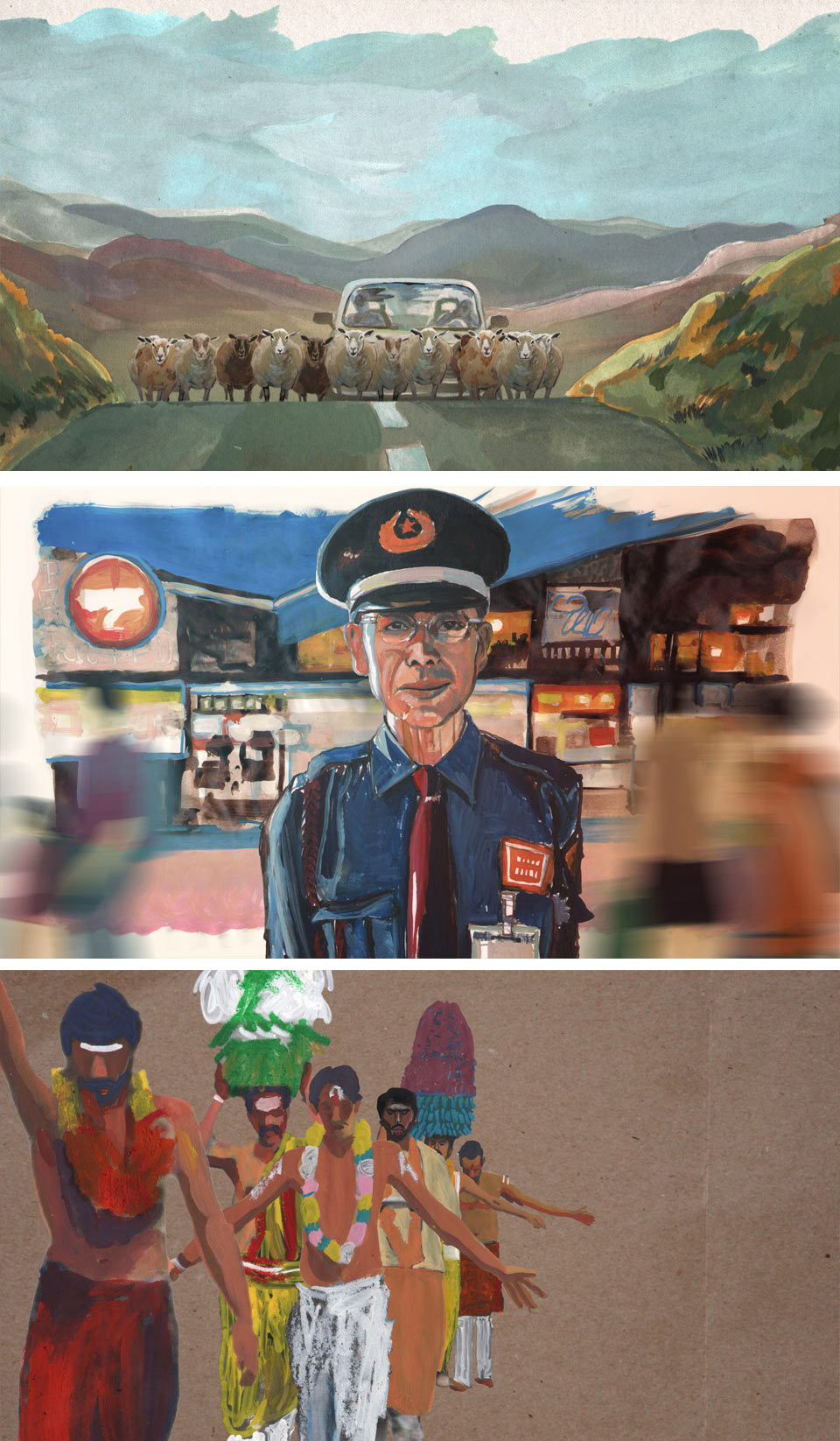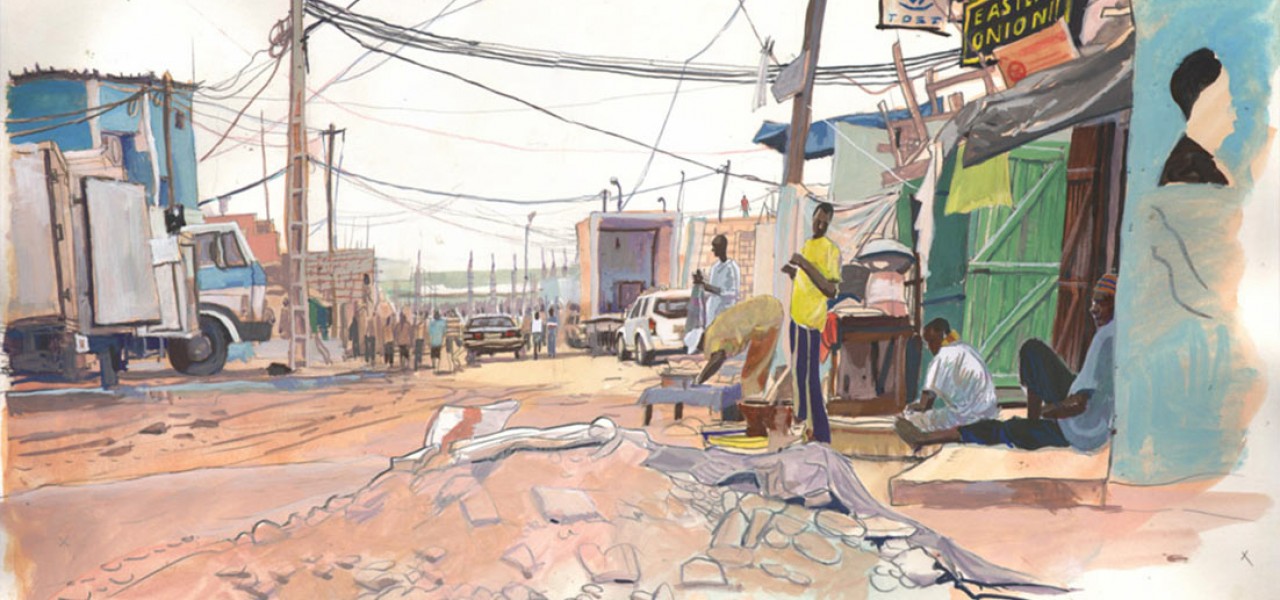
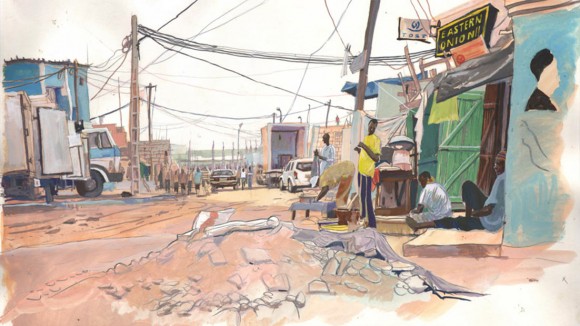
How Bastien Dubois Turned An Award-Winning Short Into A TV Series
French animator Bastien Dubois was a fresh graduate out of Supinfocom Valenciennes when he started working on his debut professional short, a diary-styled film that gave viewers a glimpse into the exotic landscapes and intriguing traditions of Madagascar.
The 2009 film, Madagascar: A Journey Diary, made a huge splash in the short film world, taking home prizes from Annecy and Ottawa, and then earning Academy Award and Cartoon d’Or nominations. A clip from the film can be viewed below:
Its success resulted in a second hand-drawn CG short, Cargo Cult, and a short-form television series in the same mold, Faces from Places (2013), which challenged Dubois to translate his unconventional and labor-intensive production technique into a streamlined process that could be produced more quickly.
Cartoon Brew spoke to Dubois at the Animateka festival last December in Ljubljana, Slovenia, about his signature hand-drawn CG style, his unconventional creative process on Madagascar, and the anxieties of directing a large crew for the first time.
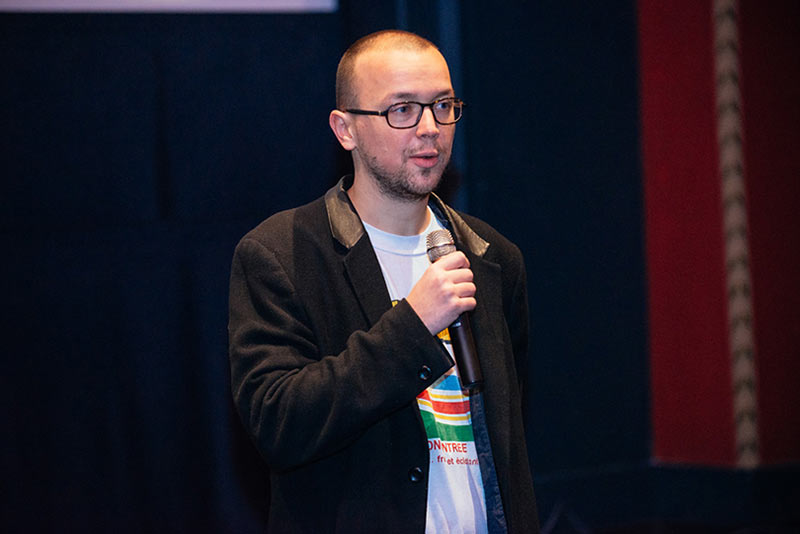
Cartoon Brew: Madagascar: A Journey Diary wonderfully captures the organic and spontaneous feeling of traveling. Was the creation of the film anything like that?
Bastien Dubois: In 2006, I moved to Madagascar for ten months, equipped with some basic technical materials, the visual idea of an animated journey diary, and six lines of script. Instead of writing a script or drawing a storyboard, I started out animating three shots and spreading those across a timeline with some music under it. That became the foundation of the film.
Every time after some traveling through Madagascar, I’d come back home [in Madagascar] to animate a few shots, based on my new experiences and update the edit of the film. Slowly the film was built around those three initial shots. I probably had fully animated about forty per cent of the film already before the story structure was, more or less, established.
I don’t know if I did it this way because I was too lazy to think before animating, or if it was a conscious decision to keep the story as spontaneous as possible. Whatever the reason, if I had developed Madagascar in the traditional way, the film would have never come out the same.
It sounds like a dream production, traveling and animating in an exotic place like Madagascar.
Bastien Dubois: Combining my two passions, I thought I would be in for a holiday – but I was wrong. Out of those ten months, really just three months were spent traveling. The remaining time was spent in my room with terribly hot weather, electricity that shut down every two hours, and fleas munching my legs.
Have you ever considered making another film in the way that you made Madagascar?
Bastien Dubois: Madagascar was a great bunch of accidents, a film made with my gut instinct. Now that I’m more aware of filmmaking techniques, things like point-of-view and such, I don’t think I could go back to something as spontaneous. I’m just not the same person as I was back then.
At the Animateka festival you were part of a thematic focus on animated documentaries. Would you consider your work as such?
Bastien Dubois: My work is generally based on real events and a lot of research, so I guess it does have those documentary aspects to it. But in the end, it’s fantasy. In a way I’d consider animated documentaries to be educational, aiming to make the audience understand things as clearly as possible. Madagascar is not meant to do that. On the contrary – I wanted the audience to feel lost. I’m much more interested in that kind of experience for the audience, in emotion more than education, truth, or even the ethicality of my choices.
In your films you use CG to create a style that’s very much hand drawn. Why wouldn’t you just produce it in 2D?
Bastien Dubois: Many people have asked me this. Yes, of course I could tell the same story through 2D hand-drawn animation, but then I wouldn’t be able to attain the comprehensive cinematography that CG offers. It’s like asking, “Can you eat your food without a fork and a knife?” Sure I can, but it wouldn’t look so nice.
Following the success of Madagascar you created a French television series with the same look but a different set-up, Faces from Places. How did that show happen?
Bastien Dubois: After Madagascar it was kind of obvious to make a series with the same concept and different countries. But that short had taken me two years – it would be impossible to do for a full series. By changing the concept into a short-form interview series with talking heads, played by Paris-based actors instead of natives all over the world, it became something doable.
Also, we turned the style experiments of Madagascar into a basic recipe of five basic technical procedures and used the motion capture technique I developed for Cargo Cult, mapping textures onto CG sets and characters. This way we managed to create 60 minutes of Faces from Places in a year.
For the first time ever you were part of a big crew, directing about 20 people…
Bastien Dubois: It was huge and I was very scared. My Madagascar team existed out of just four trainees, who were helping me out for two months near the end of the process. Due to the personal nature of the film, the story was still evolving all the time. Everything was in my head, and I couldn’t communicate it, so I didn’t get the desired results from my team. It got me really exhausted and frustrated, and it didn’t go faster than working alone. Just imagine how scared I was for a huge project like Faces from Places.
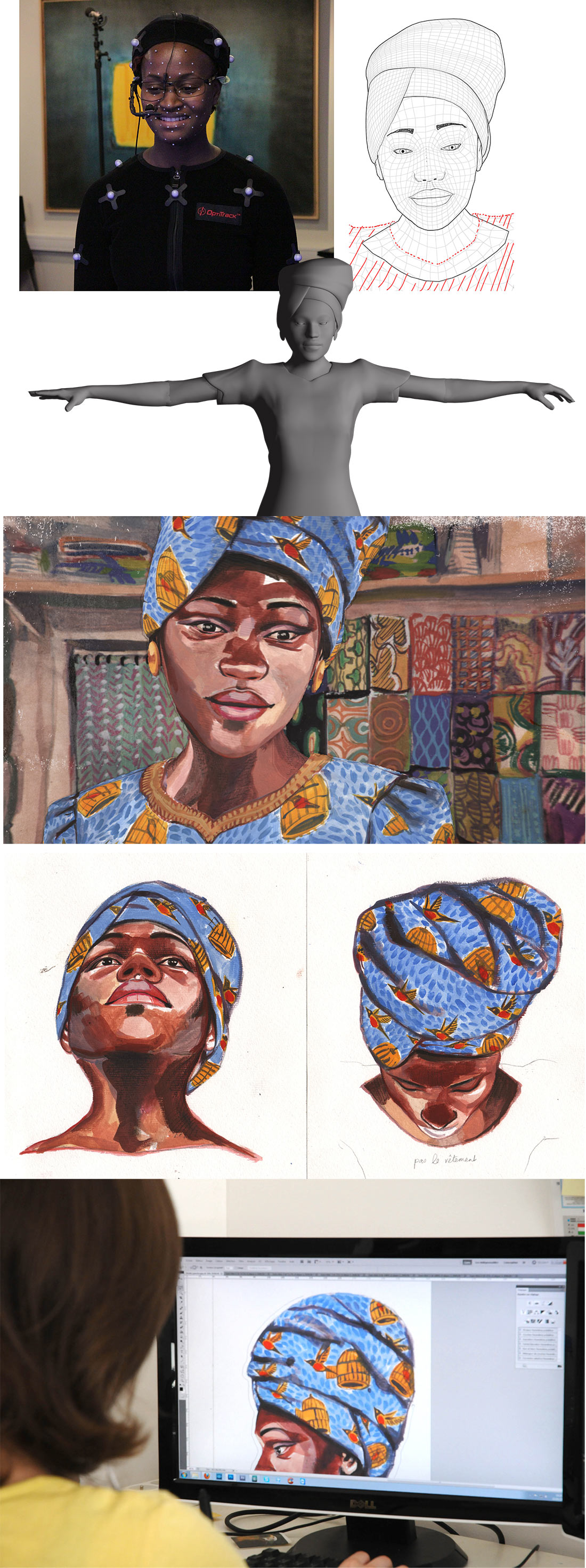
You made it, though – what got you through?
Bastien Dubois: After assembling a very nice and talented crew of people around me, managed by my assistant director Antoine [Delacharlery], I just decided to let things go. Creating the animatics was my main job as the series’ director. Through rhythm, framing, movement, and music, it was possible for me to capture the full atmosphere I was looking for as a director – it’s all in the animatic. My creative part then was done and the animatic got handed over to Antoine, who would arrange the rest. Thanks to him and the crew I ended up being the happiest director in the world.
Art Brutal, a non-profit you’re a part of, hands out a small grant (1000 euros and a TVPaint license) to a young animation director every year. Why do you think this is important? [The deadline to apply for this year is April 1, 2016.]
Bastien Dubois: Searching for the money to do Madagascar was a difficult and lengthy process. If it wasn’t for the support of Rotary Club, a grant of 2000 euros for the film that they gave me just a few weeks after I sent them a first e-mail, I would have probably given up. A small grant that’s easy to apply for can make a big difference for a young creator. What Rotary Club did for me, we want to do for others. Personally I think it’s also just very exciting to be part of someone’s potential piece of art.
